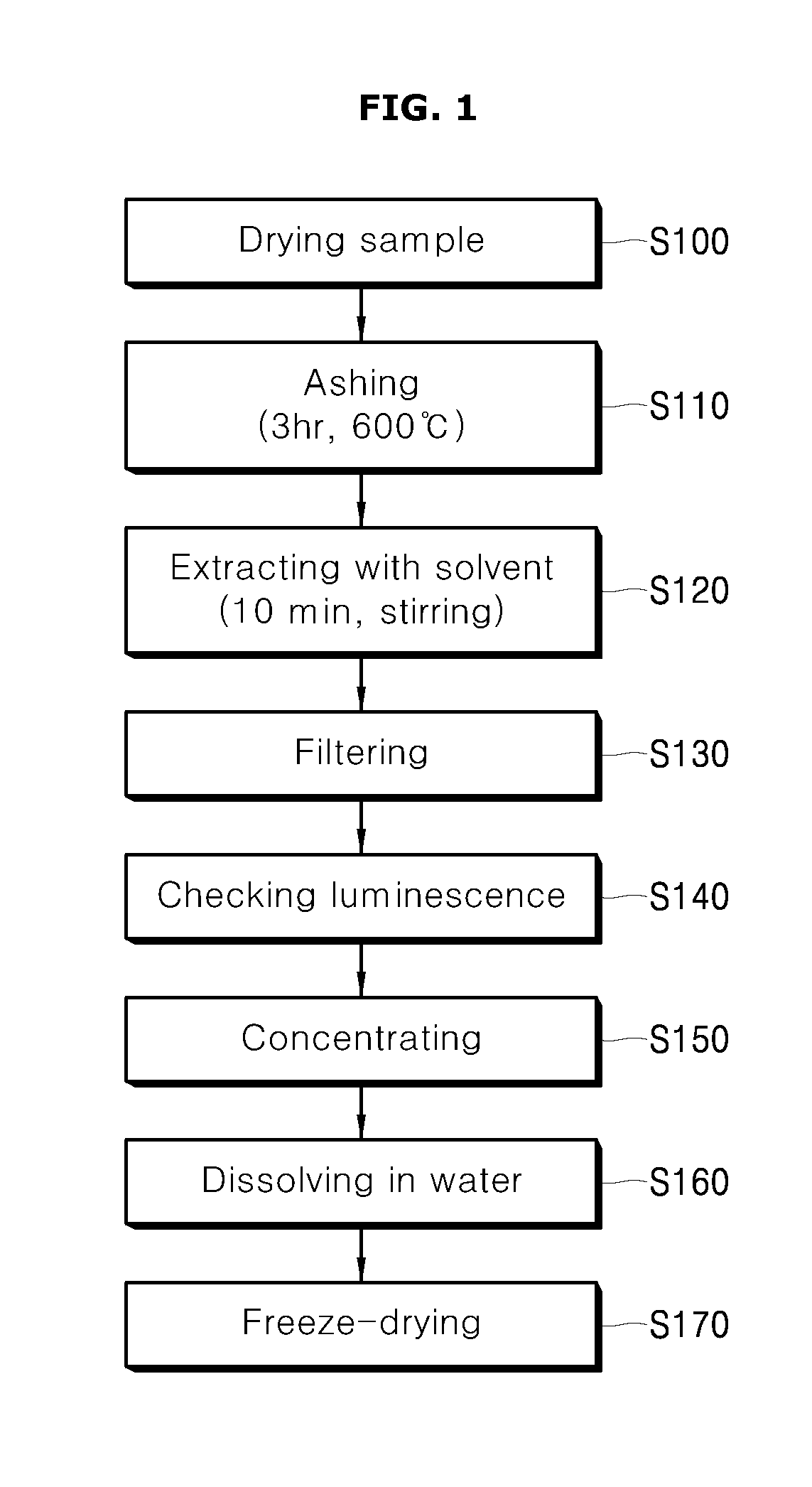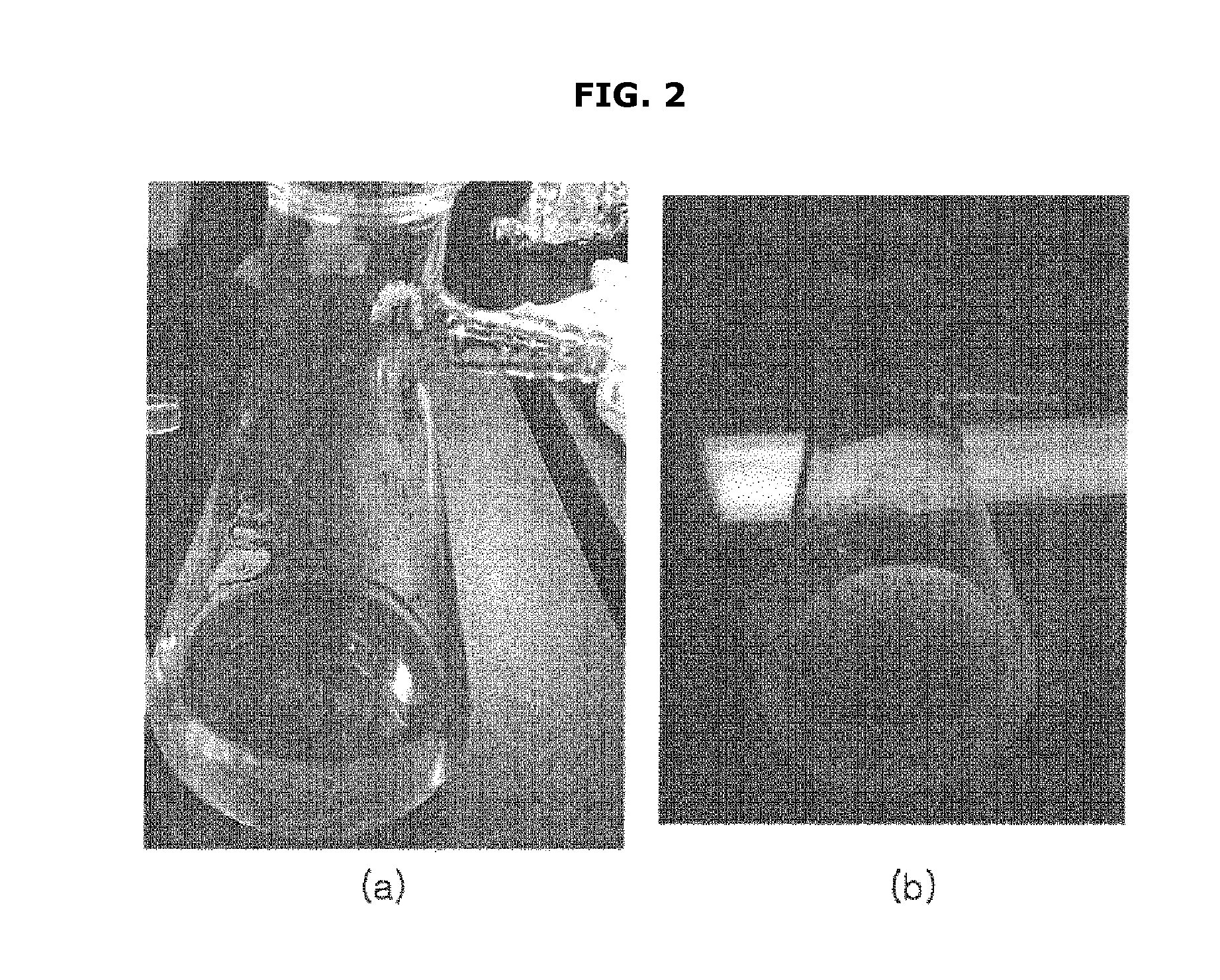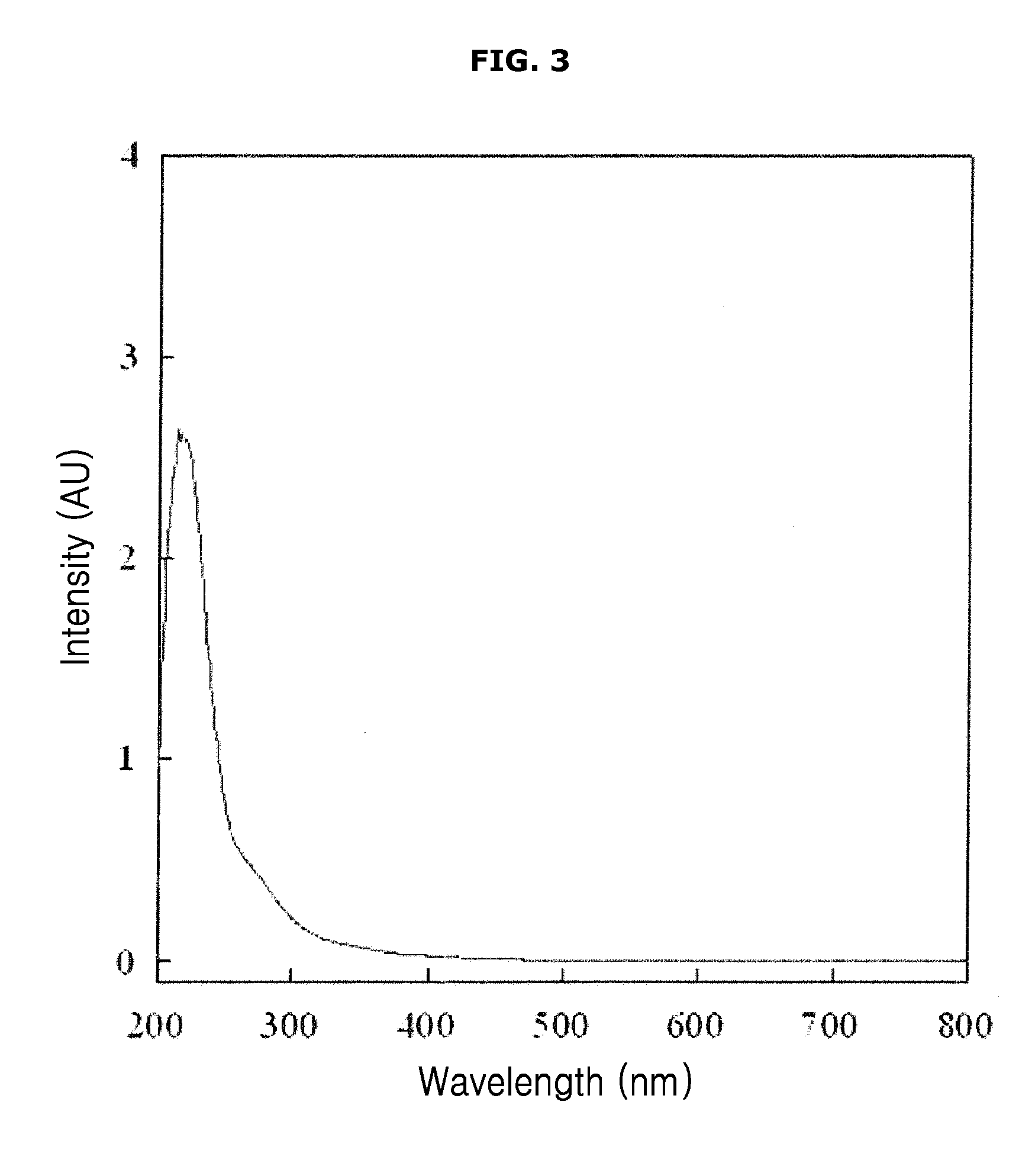Method for preparing photoluminescent carbon nanodots
a carbon nanodot and photoluminescent technology, applied in the direction of luminescent compositions, condensed water drain-off, chemistry apparatus and processes, etc., can solve the problems of nanoclusters having an economical problem, si-semiconductor quantum dots not representing excellent light emission stability, etc., and achieve excellent light emission stability
- Summary
- Abstract
- Description
- Claims
- Application Information
AI Technical Summary
Benefits of technology
Problems solved by technology
Method used
Image
Examples
Embodiment Construction
[0030]Hereinafter, the embodiments according to the present invention will be described in detail with reference to accompanying drawings.
[0031]Recently, food waste residues have been separately collected due to the aftereffect of the green movement. However, since a great amount of food waste residues are collected, the disposal of the food waste resides may be difficult. It is noted that the food waste residue, which is difficult in disposal, is used as a source material in a method for preparing photoluminescent carbon nanodots according to the exemplary embodiment of the present invention.
[0032]Meanwhile, it is noted that the method for preparing the photoluminescent carbon nanodots according to the exemplary embodiment of the present invention can employ microalgae, livestock excrement, residues after oil extraction, coffee residues, wood, and plants as well as the food waste residues as the source material.
[0033]FIG. 1 is a flowchart schematically showing the method for prepar...
PUM
| Property | Measurement | Unit |
|---|---|---|
| temperature | aaaaa | aaaaa |
| pore size | aaaaa | aaaaa |
| wavelength | aaaaa | aaaaa |
Abstract
Description
Claims
Application Information
 Login to View More
Login to View More - R&D
- Intellectual Property
- Life Sciences
- Materials
- Tech Scout
- Unparalleled Data Quality
- Higher Quality Content
- 60% Fewer Hallucinations
Browse by: Latest US Patents, China's latest patents, Technical Efficacy Thesaurus, Application Domain, Technology Topic, Popular Technical Reports.
© 2025 PatSnap. All rights reserved.Legal|Privacy policy|Modern Slavery Act Transparency Statement|Sitemap|About US| Contact US: help@patsnap.com



